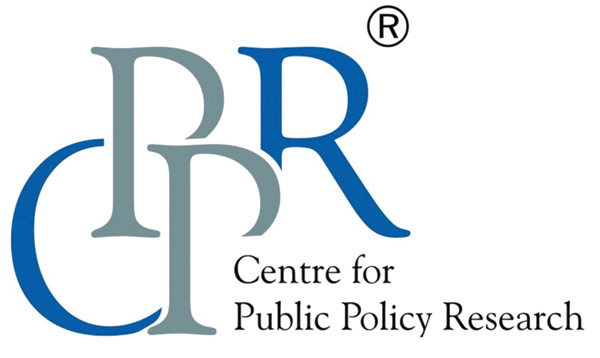CPPR in the News
Time for course correction in Kerala
The New Indian Express zooms in on the unhealthy trend of self-financing colleges winding up due to financial woes. In the news, CPPR Chairman D Dhanuraj expresses his opinions.

KOCHI: Romal S grimaces as he recalls uncertain times he and his 300-odd college-mates encountered when the management of the Cochin Institute of Science and Technology (CISAT), a private engineering institute in Muvattupuzha, suddenly decided to close the campus down “one fine day” in 2019.
“The teachers had launched a strike as their salaries were not paid,” says the youngster in his mind-20s, who was then pursuing a mechanical engineering course at CISAT. “And then came the bolt from the blue – the college was shut down.”
Aromal later joined a private engineering college under Vinayaka Missions Research Foundation, a private deemed-to-be-university, in Salem.
Meanwhile, CISAT’s second campus at Valanchery in Malappuram was also shut down due to financial issues.
The private engineering college sector in Kerala seems to have come full circle more than two decades after the A K Antonty government opened it up for the private players amid much brouhaha in 2001.
Over the years, the sector has been on a decline. So much so that today the number of institutions that have managed to survive the onslaught of time, lack of finances, and the stranglehold of outdated regulations has been reduced from 167 in the heydays to about 90.
Many of the institutions are struggling to pay back the bank loans. In the academic year 2015-16, Ernakulam topped the list with 33 self-financing colleges (as per the economic review of 2017). However, by 2023–24, the number dropped to 21. In Thiruvananthapuram, the number came down from 28 to 17.
“The numbers are likely to drop further,” says A N Kareem, general secretary of the All-Kerala Self-Financing Engineering College Management Association (AKSFECMA). “About 10 to 15 colleges are on the verge of closure in the coming academic year.”
The future of the sector, he adds, hinges on the outcome of the Kerala Engineering, Architecture, Medical Entrance Examination (KEAM). “Last year, there were about 96,000 applications for KEAM. This year, only 62,000 applications have been received,” Kareem explains.
“Only about 70% of the applicants eventually sit for the examinations. From that, only about 50% clear the test. A majority of the eligible students make a beeline for the government and aided colleges. Thus, last year, we could fill only 40 per cent of our approved intake. This year, things look bleaker.” Ravi Kumar (name changed on request), an AKSFECMA member who had to shut his engineering college down owing to financial struggles, echoes the sentiment. “There is no future for this sector,” he sighs.
He adds that the drastic drop in the student intake at his college forced him to liquidate property worth Rs 18 crore over the past six years “for paying salaries and day-to-day running of the college”. “I waited till the final batch of students graduated; I did not want to be the villain who spoiled their futures,” says Kumar, adding that the government policies are to blame for the mess.
“The rigid rules make it impossible for us to improvise.”
Sources in the sector say fear of financial loss has made many people shelve their plans to start colleges despite receiving necessary approvals.

Govt the sole villain?
“There are other factors in play,” says D Dhanuraj, chairman of the Centre for Public Policy Research. “One is the high cost. I narrowed on this reason while doing some studies related to the sector. Education cost is very high in Kerala when compared with the other states. So when they can get quality education at a lower cost in another state or even in foreign countries, and an opportunity to experience different cultures and places, the children will surely opt to go out.”
Another reason is that, unlike in the past, the youth today are not obsessed with engineering, Dhanuraj highlights.
“Engineering has lost its glow. Also, it should be noted that the children today are very well-informed. So, when it comes to their higher education prospects, they do thorough research before arriving at a decision,” he says.
“So, in an era that has opened up a wide array of new-gen courses and opportunities, why would the children settle for the traditional streams?”
Dhanuraj also points out the relatively “poor STEM (science, technology, engineering and mathematics) capacity” of the students in the state. “Why would students struggling with subjects such as physics, chemistry and mathematics take up a course that is based purely on these three?” he asks.
“An increasing number of students are taking up the humanities stream, as new job opportunities are opening up. Why slog it out at something that they are not cut out for?”
P R Shamshudeen, owner of CISAT that shut down in 2019, concurs, but has not lost all hope. “I had to close my colleges due to dismal fee revenue. The number of admissions for mechanical, electronics and civil engineering was very poor. I had no other choice,” he says.
“However, in 2022, I reopened CISAT. The realisation that the new-gen courses in AI, machine learning and data science is the in-thing made me get approval for the same from the All India Council for Technical Education. To survive in this sector, self-financing colleges need to upgrade their courses and standards.”
Kareem agrees, insisting that the state government should frame policies that are more congenial with current times.
“The rigidity has to go. There should be more freedom to start new-gen, innovative courses. It is high time the government stepped in to stem the flow of students to outside states and foreign countries,” he says.
News Published in The New Indian Express
Views expressed by the author are personal and need not reflect or represent the views of the Centre for Public Policy Research.



